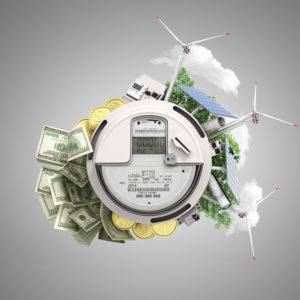America is vulnerable and exposed. Despite increased production, the United States has yet to achieve the level of energy independence adequate for national security or consumer protection.
Today’s headlines are full of examples.
When Iran captures vessels in international waters, it sends shockwaves reverberating through the global energy market. Another example is Venezuela, where descent into political chaos may lead to the exit of American producers — with China and Russia being the potential beneficiaries. A more extreme example occurred when oil prices quadrupled following the 1973 OPEC embargo of oil exports to the United States.
Geopolitical upheaval makes the global energy marketplace nervous. Uncertainty translates into higher prices. And even though the United States is producing a greater portion of the energy that we use in comparison with just a few years ago, geopolitical events can still hit American motorists at the gas pump, as we saw earlier this summer.
To the extent that domestic energy production can be ramped up in times of turmoil, the more America will remain secure and economically immune from such upheaval. A small area adjacent to the Arctic National Wildlife Refuge in northern Alaska presents the best opportunity.
President Jimmy Carter signed legislation in 1980 creating more than 100 million acres of national park land and wilderness along Alaska’s North Slope, as well as a relatively tiny reserve known as “Section 1002” from which oil could be drilled, subject to congressional approval.
Beneath Section 1002 lies an estimated 5.7 billion to 16 billion barrels of oil. That volume of natural resources is so massive it needs to be put in perspective to be appreciated. It’s vast enough to provide 10 percent of America’s daily oil production, according to U.S. Energy Information Administration estimates. It represents about 8.7 percent of the total undiscovered, recoverable oil within the United States.
We can no longer ignore such an untapped reserve within American borders. Supplementing our oil supplies with domestic barrels from ANWR better insulates us from the volatile world oil market. Americans deserve a steady energy supply, and not only does energy independence benefit us from a national security perspective, it also bolsters our economic security.
Energy independence and the stability that comes with it would better allow American businesses to more accurately forecast their future financial outlays, enabling them to clearly see where they can afford to invest more time and money in expanding their operations. This benefits the consumer in the form of lower gas prices and a more secure America.
Drilling in the coastal plain of ANWR would also reduce dependence on foreign oil reserves, better shielding us from unpredictable tyrants in oil-producing nations hostile to the United States.
We must start drilling in Alaska. It takes time and money to move and build the infrastructure necessary to start tapping into that resource, which is why it is crucial to begin work now. It could take years from the time exploration and development of gas and oil from ANWR begins to when the crude oil is finally transported and refined for use by American businesses and consumers.
Policymakers must move now to ensure that a supply gap from Venezuela, as well as other potential future interruptions from other sources, are minimized.
While Congress approved drilling in part of ANWR in 2017, some politicians — predictably — aligned with self-serving green groups seeking to block it. Senators Kamala Harris, Bernie Sanders and Elizabeth Warren, for example, have all championed legislation that would curb any drilling operation in ANWR.
Additionally, litigation by “keep it in the ground” groups opposed to all oil production will undoubtedly further delay the start of drilling operations in the area, as would the miles of red tape that must be navigated by any company wishing to secure permits.
The National Environmental Policy Act of 1969 is yet another bureaucratic hurdle that must be overcome before the energy that will ultimately benefit our economy and consumers can even begin to be produced.
It’s time to take control of our ability to shape the oil market so that we can, once and for all, become impervious to the whims of dictators of foreign, oil-rich nations, and we can emerge not only energy-independent but energy-dominant.

